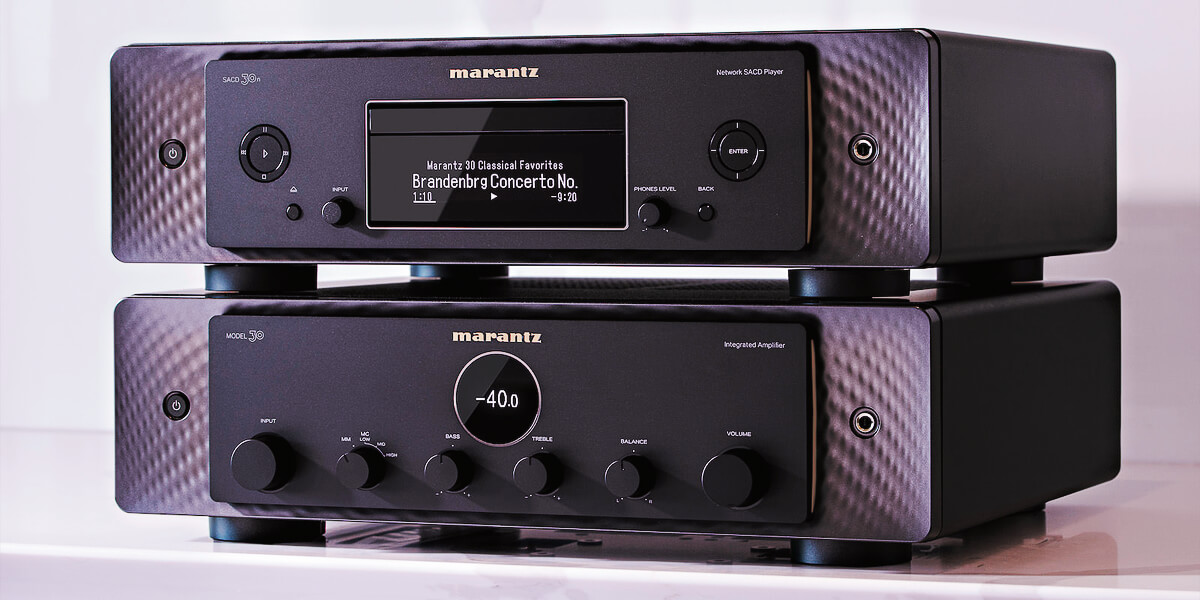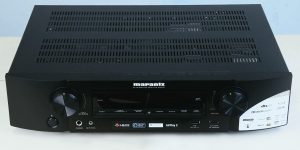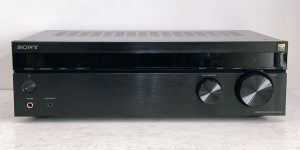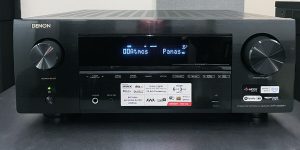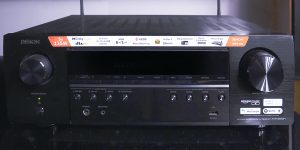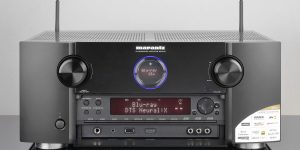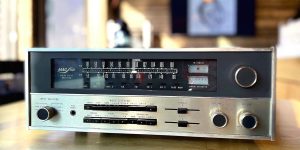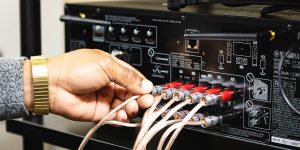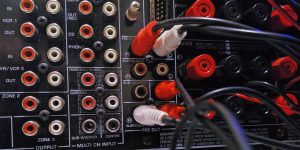A high-level and multifunctional advanced audio system cannot go either without an AV receiver or an amplifier. Both these devices aim to improve the sound, which is why people often mix them up. However, there are distinct differences between these devices that allow having one’s side in the receiver vs. amplifier dispute. In this article, I will consider these differences together with the pros and cons of each of the appliances.
Receivers explained
In general terms, a receiver is a device that receives and processes signals, information, or data from a source or transmitter. It serves as the central hub for different components in a home theater system or audio setup.
Stereo receivers
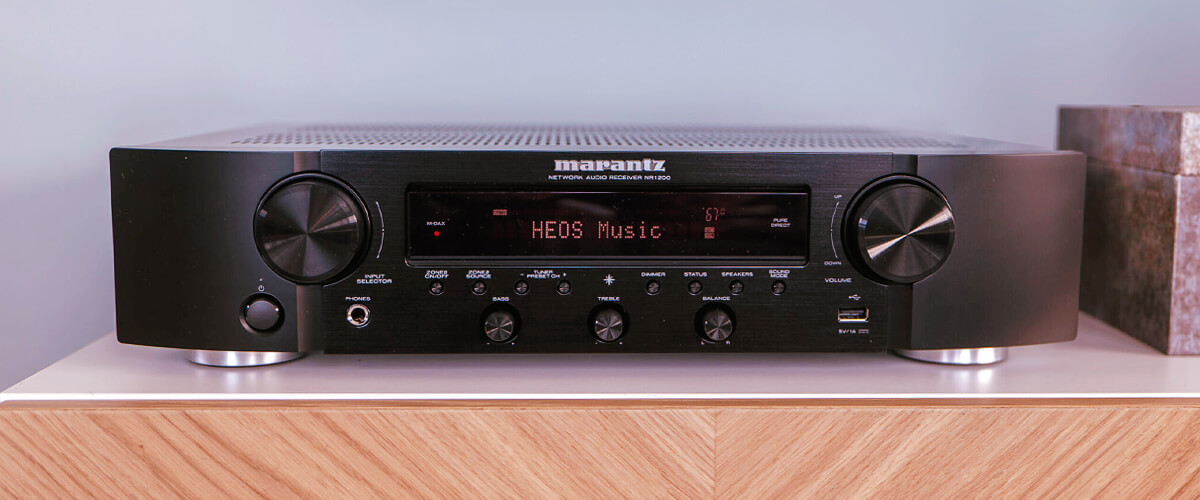
A stereo receiver combines the functions of an audio amplifier and an AM/FM radio tuner. It is designed to receive and process stereo audio signals, allowing you to listen to music from different sources and control the audio output to speakers.
A stereo receiver typically has the following key features:
| # | Feature | Description |
|---|---|---|
| 1 | Amplification | A built-in amplifier provides power to drive speakers and increase the audio signal volume. The power output is measured in watts per channel (WPC) and determines the loudness and clarity of the sound. |
| 2 | AM/FM Radio Tuner | This device often includes a radio tuner that can receive and tune in to AM (Amplitude Modulation) and FM (Frequency Modulation) radio stations. |
| 3 | Audio Inputs | Stereo receivers usually have multiple audio inputs to connect various audio sources. Common inputs include RCA connectors for connecting CD players, turntables, media players, or other audio devices. Some receivers also offer digital inputs like optical or coaxial connections to interface with digital audio sources. |
| 4 | Speaker Outputs | These outputs are usually in the form of binding posts, spring clips, or banana plug connectors. The receiver amplifies the audio signals and sends them to the connected speakers for playback. |
| 5 | Control and Connectivity | Stereo receivers have controls and knobs to adjust volume, bass, treble, balance, and other audio settings. They may also feature remote controls for convenient operation. Additionally, many modern stereo receivers offer connectivity options such as Bluetooth, Wi-Fi, or network streaming capabilities, allowing you to wirelessly stream audio from compatible devices or access online music services. |
Stereo receivers are commonly used in home audio systems, providing a central hub for audio playback from various sources and delivering high-quality sound to speakers.
AV receivers
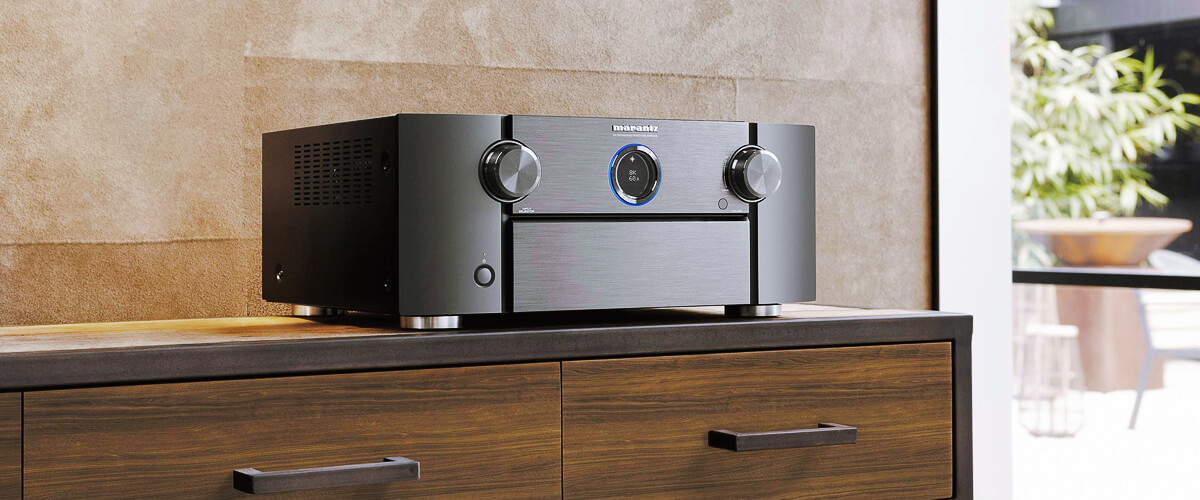
An AV receiver combines the functions of a stereo receiver with additional features to support surround sound, video processing, and connectivity options.
Here are some key features and functions of an AV receiver:
| # | Feature | Description |
|---|---|---|
| 1 | Audio Processing | Most models support surround sound formats such as Dolby Atmos, DTS:X, and others. It can decode and process multichannel audio signals to create an immersive audio experience with multiple speakers. |
| 2 | Video Processing | Video processing capabilities to handle video signals from various sources. They may include features like upscaling, converting lower-resolution video signals to higher resolution, video passthrough, and support for different video formats and standards. |
| 3 | Amplification | This feature can be called the home theater amplifier. Built-in amplifiers provide separate channels for different speakers, including front left, front right, center, surround speakers, and subwoofer outputs. |
| 4 | Audio and Video Inputs | Multiple audio and video inputs, including HDMI, RCA, optical, and coaxial connections. These inputs allow you to connect various audio and video sources such as Blu-ray players, game consoles, media players, cable/satellite boxes, and more. |
| 5 | Surround Sound Setup | Speaker setup and calibration features. This includes room correction technologies like Audyssey, YPAO, or MCACC, which analyze the room’s acoustics and adjust the audio output to optimize sound quality based on the specific listening environment. |
| 6 | Connectivity Options | A range of connectivity options for network streaming, including Wi-Fi, Bluetooth, and Ethernet. |
| 7 | Control and User Interface | AV receivers typically come with remote control for easy operation and configuration. Some models may also support mobile apps or offer on-screen menus and graphical user interfaces to simplify setup and control. |
Overall, an AV receiver serves as the central control unit for audio and video signals in a home theater system, providing audio processing, amplification, and distribution functions to deliver an immersive and high-quality entertainment experience.
Amplifiers explained
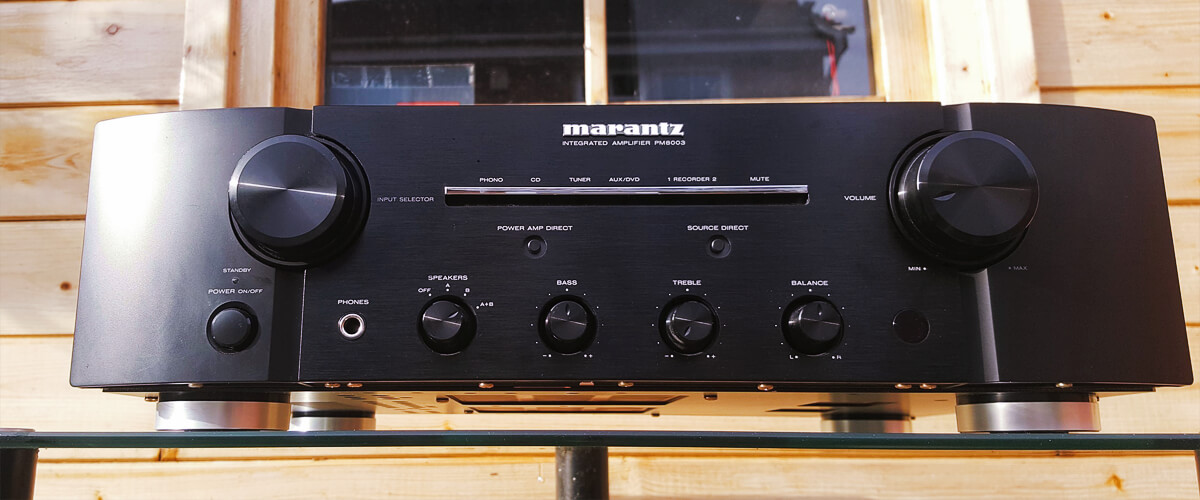
An amplifier is an electronic device or circuit that increases the amplitude or power of an electrical signal. It takes a weak input signal and boosts its strength to a level that is suitable for driving speakers. Amplifiers are widely used in various applications, including audio systems, telecommunications, instrumentation, and many electronic devices.
Difference between power amps, integrated, and preamps
Power amplifiers, integrated amplifiers, and preamplifiers are all types of amplifiers, but they serve different functions and features. Here’s a breakdown of the differences between these amplifier types:
- Power Amplifiers: The main difference between an amplifier and a receiver is that an amplifier is concentrated on the music quality only. Also known as stereo amplifiers or power amps, they typically have high power output capabilities and are optimized for delivering clean and powerful audio signals to speakers without distortion. They often have multiple channels to support stereo (two-channel) or surround sound (multichannel) setups.
- Integrated Amplifiers: These devices combine the functions of a preamplifier and a power amplifier into a single unit. They include both the preamplification stage, which controls the volume and provides input selection, and the power amplification stage, which drives the speakers.
- Preamplifiers: Preamplifiers are designed to provide signal processing and selection capabilities, allowing the user to adjust the audio characteristics and select the desired input source. They usually have lower power output compared to power amplifiers since their primary function is to prepare the signal for amplification.
In summary, the key differences between power amplifiers, integrated amplifiers, and preamplifiers lie in their functionality and form factor. Power amplifiers focus solely on amplifying signals to drive speakers, and integrated amplifiers combine the functions of preamplifiers and power amplifiers in one unit. In contrast, preamplifiers provide signal processing, input selection, and volume control before the signal is sent to a power amplifier.
Choosing the right device for your needs
Both amplifiers (of all types) and receivers are powerful sound-controlling hubs that can provide great sound to your environment. Still, each of them has its specific features:
- amplifiers give the most advanced and flexible sound setting while taking up quite much room space;.
- receivers provide quality surround sound, can work as a home theater amp, have extended capabilities for playing video, and are of more compact sizes.
So, to choose the right device for your specific needs, you should stop for a while and think about what you prefer. For example, I recommend choosing an AV receiver if you like to watch videos, listen to music, and generally just love good sound. On the other hand, if you like listening to music more and don’t watch movies as often, go for a stereo receiver. But if you’re a true audiophile who wants to control all the frequency ranges in your audio system and even more, then opt for amplifiers, and you’ll never regret it! Additionally, if you don’t want to sacrifice much space for your audio needs, I advise choosing amplifiers of the integrated type.

